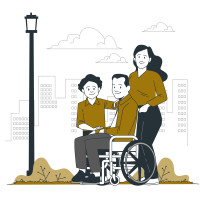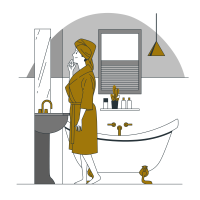The new Roman Forum Museum

The Roman Forum Museum has been built on the site of the Cloister of Santa Maria Nova. Here you can see the remains of the Roman Forum excavated by the archaeologist and architect Giacomo Boni in works carried out at the beginning of the twentieth century. Boni opened the first Forum Antiquarium in 1908 in the monastery of Santa Francesca Romana/Santa Maria Nova, a building erected by Pope Alexander VI between 1492 and 1503.
It was built to display to the public the finds from his excavations at the time in the area of the Roman Forum. The Antiquarium had nine exhibition rooms and was designed as a cultural centre for study and learning.
While displaying above-ground relics, it preserved the integrity of what had been excavated, based on the idea that individual pieces have their true historical and archaeological value only when displayed in their original setting. Over the years, material from the excavations of Dante Vaglieri, Alfonso Bartoli, Pietro Romanelli and Gian Filippo Carettoni was added to the Antiquarium's collection. In the recently opened Forum Museum, two rooms are dedicated to the cemetery that Giacomo Boni explored between 1902 and 1905 near the Temple of Antoninus and Faustina.

His work uncovered a total of forty-one burials: four children's graves associated with archaic dwellings dating from the late 6th to 5th centuries BC, twelve hut burials dating from the late 8th to 7th centuries BC, and twenty-five pit and inhumation graves dating from the Early Iron Age (around the 10th century BC). It represents the original funerary activity in this area before it became a place of settlement.
There is also a room where the drawings of the artists who worked with Giacomo Boni are kept; here you can find some of them among the tombs, arranged in display cases specially made for them by the Venetian archaeologist and restored to their original colour. In the newly curated itinerary, these "displayed tombs" become part of new display cases, elements of an integrated exhibition system that evokes the moment of discovery; presented in large illuminated glass chambers that interact harmoniously with the polychrome floors already restored by Boni.
The cremation tombs, dating from around the 10th century B.C. (Latium Phase IIA), contain grave goods, among which are cinerary urns, some handmade miniature vases and objects of standard size; there are also inhumations in pits of the same period and tombs belonging to later settlements, whose grave goods consist of wheel-made pots.
A large model by Giacomo Boni, which faithfully reproduces all the archaeological finds found in this part of the Forum, is also on display to help visitors understand the cemetery. The model would remain a testimony to Boni's scientific discipline, as it was here that he applied the stratigraphic method to his fieldwork in the area, carefully collecting and recording all the material.
Every step of the research is documented in the form of plans, sections and photographs. The exhibition continues in the same rooms that open onto the Temple of Venus and Rome, dedicated to the origins of Rome, creating a dialogue between sculptural groups and architectural elements such as the Fonte di Giuturna complex with the frieze of the Basilica Aemilia.

The marble has the Dioscuri, in this place, according to legend, they appeared to announce the victory in the war against the Latins at the Battle of Lake Regillus, fought around 499 or 496 BC. This is where the fountain is located. The great monumental complex, which can be seen from its continuity over so many centuries into the early and late Middle Ages, was discovered by Boni in 1900. In the second century BC, it was housed in a rectangular basin and later decorated with statues of Apollo and Aesculapius. These particular rooms in the museum have adjoining display areas, including this fountain head with an Augustan inscription. There are reliefs of scenes founding Basilica Aemilia that take place during some of the most critical situations involving Roman history leg around its foundation in 179 BC under censors M. Aemilius Lepidus and M. Fulvius Nobilior.
These include scenes of Romulus and Remus founding the new city, building walls - possibly those of Rome or Lavinus - taking the Sabine women, a feast for the grain god Conso, a battle scene, the punishment of Tarpeia and the Parentalia. Room 3 is dedicated to the sacred areas of the Roman Forum. Large display cases, specially designed and built, mark the space of an itinerary that seeks to give meaning to the important discoveries made by Giacomo Boni's investigations in Lapis Niger, Equus Domitiani/Doliola and Regia. In the centre of the room there is a circular display case, inspired by the shape of the Aedes Vestae, containing finds from Boni's excavations in both the Sanctuary of Vesta and the Casa delle Vestali. Finds discovered by Alfonso Bartoli during the excavation of two wells in the courtyard of the Sanctuary were also exhibited here.
Other very important artefacts from the so-called votive deposit of the Capitoline Cliffs are also part of this room; they were found during excavations carried out by the Archaeological Superintendence of Rome in the 1980s and 1990s. COR arquitectos, Cremascoli, Okumura and Rodrigues carried out the exhibition project and related works in collaboration with Flavia Chiavaroli.
Services and Accessibility

Wheelchair accessible

Toilets

Information point
How to Arrive
Opening Hours
(last admission 18:15)
